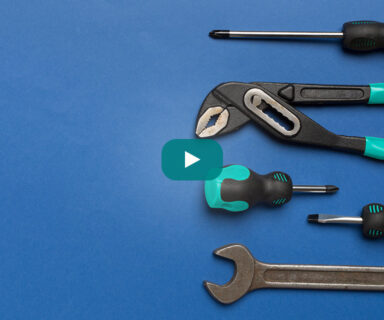
During BrightTALK’s event, Reach: Intent. Content. Demand., Michael Latchford (VP, Strategic Alliances & Partner Marketing at TechTarget) hosted a panel discussion entitled Guiding the IT Buying Journey: Strategies for Partner Marketing. During this session, Laurie Mitchell (VP of Partner & International Marketing at Wasabi), Meaghan Moore (VP, Global Partner Marketing at ServiceNow) and Amy McNew (Director, North America Ecosystems Marketing at Palo Alto Networks) shared some sage advice for B2B technology partner marketers.
Here are four key takeaways to help you more effectively engage buyers for joint partner solutions:
Takeaway 1: Help your partners target the right audience
By their very nature, joint solutions are typically more costly and technologically complex than single-vendor products or services. Because they involve multiple technologies or services, joint solutions are also likely to serve a broader set of requirements. In turn, the buying committee for joint solutions is expanding and includes a variety of technical and business personas with unique pain points, requirements and expectations. To improve campaign effectiveness, partner marketers need to guide their partners on who to target and arm them with the messaging and content they need to successfully engage the full buying committee from both a bottom-up and a top-down perspective.
Here is some advice from Amy McNew from Palo Alto Networks:
“We’re seeing that buying decisions within organizations are requiring more and more stakeholders. It’s just getting more matrixed and complex. The more we can guide our partners around the types of personas to target, the more successful they’ll be. We make sure our partners understand that they need to target both C-level and practitioners, because both are going to play a critical role in the deal. From there, we deliver asset recommendations to our partners to help them get the right content in the hands of the right people at the right time.”
Key takeaway: Identify the key decision-makers and influencers that make up the buying committee for your joint solution. Understand each persona’s top-of-mind issues and decision drivers. Provide guidance to partners to help them target the right audience with the right messaging at the right time.
Takeaway 2: Arm partners with the third-party perspective buyers crave
Today’s technology buyers are not easily swayed by glossy brochures and similar materials, particularly when researching potentially costly purchases such as joint solutions. Instead, they want to understand how these technologies are making a difference for other organizations.
While technology buyers consume a wide variety of content types when researching joint partner solutions, they rely heavily on validation from industry experts and their peers. A recent Enterprise Strategy Group study revealed that six of the top eight content types deemed most valuable are assets that fall into this category, including:
- Analyst reports
- Expert assessments or validations of vendors
- Third-party technical and/or economic validation reports
- My peer network
- Technical advice/tips from an independent editor/expert
- Case studies
Laurie Mitchell from Wasabi reinforces the need for this type of content:
“I echo the need for a broad variety of content, but decision makers want to feel confident in their decision to go with you and the joint solution. So, that customer reference, those videos, the third-party references or [analyst reports] are critical for making buyers feel comfortable that they’re making the right decision.”
Key takeaway: Ensure your joint content library includes a range of content types, from top-of-funnel thought leadership assets like webinars, e-books and infographics to later-stage content offering third-party perspectives like technical assessments, economic validations and customer case studies.
Takeaway 3: Balance scale and flexibility with customizable packaged campaigns
Vendors who go to market through partners often find that their partners fall across a broad spectrum of marketing maturity. Some are well-versed in driving demand through top-of-funnel campaigns and engagement programs that convert prospects into pipeline, while others may have limited to no marketing resources or expertise. To set less mature partners up for success and create scale, it’s crucial to provide simple self-service campaigns that still provide partners with some flexibility to tailor them to meet their unique needs.
Meaghan Moore from ServiceNow advises:
“Start with programs at the top of the funnel with thought leadership, consideration and awareness, and [offer] a variety of programs throughout the entire funnel at different stages and at different price points. [It’s] super important to have self-serve programs where partners can come in, grab those programs and go out and execute in the field. I think the most important thing for self-serve is that it must be customizable. You can’t just give [partners] a generic piece of content. It’s not going to work for anyone. It’s mandatory to have at some level of customizability when they take it over.”
Key takeaway: Consider the needs of less mature partners when building through-partner campaigns. Where possible, deliver turnkey “campaigns in a box” or “events in a box” that are simple for partners to successfully tailor and execute even if they have limited marketing resources.
Takeaway 4: Provide guidance and tools to facilitate partner follow-up
One of the key challenges for vendors focused on a through-partner motion is ensuring that their partners are appropriately following up on top-of-funnel leads. Smaller or less mature partners may not have a BDR team or the know-how and technology to run an effective nurture program. To drive better campaign outcomes, partner marketers must arm their partners with step-by-step guidance and tools to help them effectively engage prospects throughout the funnel.
Amy McNew from Palo Alto Networks shares:
“If you do a content marketing campaign and that’s all you do, your leads will get stuck in the funnel. We’re finding that a lot of partners get the leads, maybe they do a phone call follow-up to those leads and then they look at us with “What’s next? Now what?” When we share content or programs with our partners, we try to present it in a journey for them to help walk through things like: How do you start a conversation with your customer? Who should you be talking to first? What content do those customer personas want to see before even talking to their sales teams? Partners need to see it in that timeline format to understand how to walk a customer or lead through the pipeline funnel.”
Key Takeaway: Precious partner marketing dollars are wasted if leads don’t convert into pipeline. When building packaged campaigns, think beyond the top of the funnel and provide your partners with step-by-step guidance on how to effectively follow-up with and engage prospects.
How can we help?
Going to market with, through or to partners? TechTarget’s dedicated Partner Marketing Services team can help refine your joint messaging, deliver compelling content to fuel the buyer’s journey and generate better leads that convert into partner pipeline. Learn more about our solutions for Strategy, Content and Demand or connect with us to explore how we can help.




